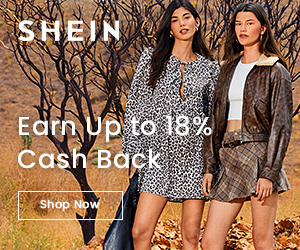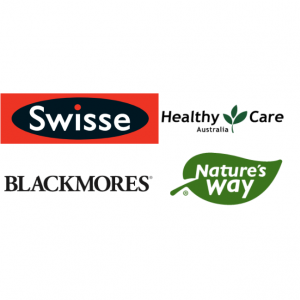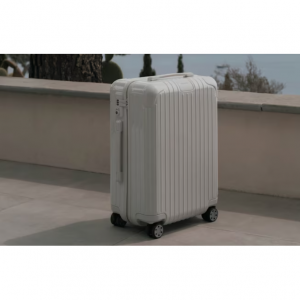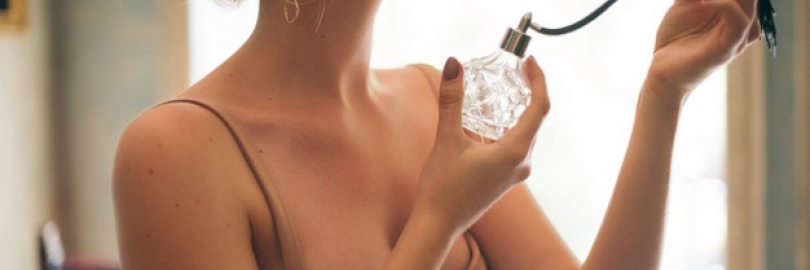
Parfum vs. eau de Parfum vs. Eau De Toilette vs. Cologne: What is the Difference, and How to Choose?
Finding the right concentration is just as important as choosing the perfect scent. When buying a perfume, there can be a lot to decipher - brand, price, type. Fragrances come in a lot of forms, including perfume, cologne and eau de toilette... All fragrances are largely the same, but they’re given a a different name based on the concentration of oil in alcohol and water. But what’s the difference between these products? Should I buy eau de parfum or toilette? What's eau de parfum meaning and eau de toilette meaning? This guide will explain the different types/categories of perfume, perfume scents guide and why some last longer, are more expensive, and perform better. Whether you are choosing perfume for a woman or for a man, I hope it can help you!
Fragrance Types: Parfum vs. eau de Parfum vs. Eau De Toilette vs. Cologne: What is the Difference
Parfum / Perfume:
Meaning: Known as extrait de parfum or pure perfume. There is virtually no difference between perfume and parfum. Parfum is the French term for perfume, so they can be used interchangeably. People with sensitive skin may do better with parfums as they have far less alcohol than other fragrance types and therefore are not as likely to dry out the skin.
Perfumes have the highest fragrance concentration of essential oils or 'perfume extract' with around 20 to 30% essential oils in the fragrance blend. It's usually heavier and oilier. Perfumes would last the longest among all other types: usually six to eight hours. But also, perfume or parfum will demand the highest price.
Concentration: 20-30%
Longevity: 6-8 hours
Eau de Perfume / Eau de Parfum(EDP):
Meaning:
EDP is the perfume category with the next highest concentration of oils with around 15 to 20% essential oils or 'perfume extract' in the fragrance blend. It's less expensive than parfume.
EDP is the most common type of fragrance and typically how all new fragrances are released. Many perfumes on the department store counter are eau de parfums. It has slightly more alcohol and water in the ingredients, however, it still has a high level of perfume oils. It's also recommended for people with sensitive skin and it's suitable for everyday use. On average, you can get a solid five to six hours of your fragrance working hard.
Concentration: 15-20%
Longevity: 5-6 hours
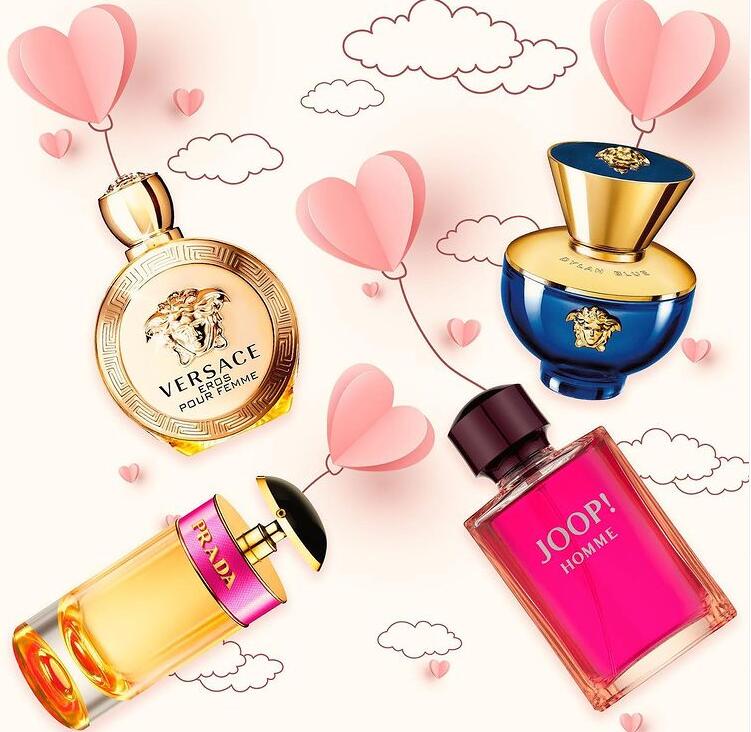
Eau de Toilette(EDT)
Meaning:
The term eau de toilette was taken from the French term 'faire sa toilette' which means getting ready. Eau de toilette has a lower concentration of perfume oils, usually 5 to 15 percent, and is made to have a lighter wear on the skin. It will normally last three to five hours .
It is cheaper than the EDP and is one of the most popular types of fragrance available. Many successful fragrances start off as eau de parfums and are then released in lighter, eau de toilette versions, but they may not always share the same notes as their parfum counterparts. Some of the heavier notes, like woods and patchouli, can be removed to make the fragrance lighter; others, like florals or citrus, may be added to boost effervescence.
Concentration: 5-15%
Longevity: 3-5 hours
Eau de Cologne
Meaning: Cologne (eau de cologne) is the oldest term for perfume, used in North America for masculine scents. Originally eau de cologne is referred to a traditional recipe that used herb and citrus notes with little anchoring with base notes.
Light, fresh and fruity, eau de cologne typically composed of two to four percent perfume oils in alcohol and water. Eau de Colognes come in bigger bottles since more liquid is needed because the fragrance only lasts up to 2-3 hours. Cologne is great to spritz on and freshen up, but not for all-day, lasting wear. It tends to be used in fragrances for younger people.
Concentration: 2-4%
Longevity: 2-3 hours

If you like online shopping,don't forget to sign up at Extrabux.com!(What is Extrabux),then you can enjoy up to 30% cashback on your order from Extrabux! Sign-Up Bonus: Free to join it & get $20 welcome bonus!
How to Choose Right Perfume for Yourself?
What Are Fragrance Notes?
Fragrance notes are an element of a method of describing a perfume. They describe scents that can be sensed when the perfume is applied to the skin. They are essentially the different scent layers that make up the final fragrance. They are divided into three classes according to the scents that can be sensed in different periods of time after the application and can be top (or head) notes, middle (or heart) notes, and base notes.
Top /Head Notes
The top notes of a fragrance are sometimes known as opening notes or head notes. Top notes are those smells that can be sensed immediately after the perfume is applied. They are very strong in scent and they are the lightest of all the notes. As a result of their lightness, top notes may not be the longest-lasting element of a fragrance. They form a person's initial impression of a perfume and thus are very important in the selling of the product.
Typical top notes include citrus elements (bergamot, lemon, orange zest), light fruits (anise, berries, grapefruit), and fresh herbs (basil, sage, lavender).
Middle /Heart Notes
Heart notes lie at the heart of the fragrance. Otherwise known as middle notes, this scent layer is the foundation and the major smell of any fragrance and can be chosen to cover the base smell that can sometimes be unpleasant at the beginning. It's known to make up approximately 40-80% of the final fragrance.
They serve to mask the often unpleasant initial impression of base notes, which become more pleasant with time. The scent of a heart note compound is usually more mellow and "rounded." Scents from this note class appear anywhere from ten minutes to one hour after the application of a perfume.
Scents used to give middle tones to perfumes are scents of rose, ylang ylang, lemongrass, neroli, pine, cardamom, lavender, rosemary, juniper, chamomile, marjoram, nutmeg, and black pepper, etc.
Base Notes
Finally, the base notes will start to shine through once the top notes have completely evaporated. Alone, base notes make up 10-25% of the final fragrance.
Base notes bring depth and solidity to a perfume and their odor lasts the longest. Consisting of large, heavy molecules that evaporate slowly, compounds of this class of scents are typically rich and "deep" and are usually not perceived until 30 minutes after the application of the perfume or during the period of perfume dry-down. Some base notes can still be detectable in excess of twenty-four hours after application, particularly the musk-type notes.
Common base notes include myrrh, frankincense, sandalwood, vanilla, patchouli, musk, vanilla, ginger, clove, and cedarwood as well as
others.

What Is the Fragrance Wheel?
The fragrance wheel is a round diagram that displays the different scent families and subfamilies. Perfumes can be classified according to the “Fragrance wheel” which simplifies fragrance classification and naming scheme. This method was invented in 1983 by Michael Edward, a British fragrance expert. Each family consists of a prominent scent, while the subfamilies are blended versions of these fragrances.
The scents are grouped based on their similarities and differences to show their relationship to one another. The scent groups that border each other share common olfactory characteristics, while those that are further away from one another are less related.
Types of Scent Families
Perfumes themselves are generally classified into two groups: modern and traditional (although these are not the only types of classification of perfumes).
1) Traditional perfumes appeared at the beginning of the 20th century and it has following subcategories:
Single Floral (or soliflore)
Perfumes that have a dominant scent of just one flower. Floral perfumes represent the oldest and most popular fragrance family for women and have been known since ancient times to symbolize love and romance.
Floral Bouquet
Perfumes whose scent is a combination of several flowers. Floral fragrances can range from being light and delicate, to more complex and intense. Floral fragrances are one of the most popular families, and one of the broadest. Any fragrance that has a sweet and flowery scent will belong under this family, using notes such as roses, jasmine, lilies and peonies.
Oriental or Amber
Those have sweet and slightly animalistic scents. Oriental fragrances are warm, sweet, and even a little spicy. Perfumes and aftershaves in this family are rich and sensual, often made with interesting notes of cardamom, cinnamon, vanilla alongside the likes of jasmine, orchid, and orange blossom. A more luxurious fragrance family, oriental fragrances vary from floral oriental, soft oriental, and woody oriental.
Woody
made of agarwood, sandalwood, cedarwood, amber, and vetiver which give of woody scents. it's a great choice for wearing in the evening. Woody fragrances are another warm family, with a mysterious and captivating scent that is often favored amongst aftershaves in particular. Woody fragrances are split into mossy woods with an earthy, sweet undertone, and dry woods which often have a smoky, leathery smell to them.

Leather
Scents that are reminiscent of leather but made of scents of honey, tobacco, juniper, aldehydes or other synthetics, designed to give a skin-like scent. Women’s chypres, and men’s fragrances, are most likely to have a leathery sensuality.
Chypre
Called after the perfume of the same name that they resemble in scent and which was made in 1917 by François Coty, French perfumer, and businessman (and fascist). Chypre is characterized by an accord composed of citrus top notes, a middle centered on cistus labdanum, and a mossy animalic set of base notes derived from oakmoss.
Chypre fragrances are warm and dry and almost all built around woody, the mossy accord of bergamot, oakmoss, patchouli, and labdanum (from the cistus, or 'rock rose', plant). Elements of flowers, fruits, or woodiness are sometimes played up in chypre fragrances – so this family has a few 'relations', within it.
Fougère (French for 'fern')
It has a sharp herbaceous and woody scent resembling a fern. Perfumes of this type are especially popular as fragrances for men. Many modern fougère perfumes have various citrus, herbaceous, green, floral, and animalic notes included. The most common additions to the basic fragrance blend include vetiver and geranium. Bergamot is often present to add sharpness to the lavender top-note.

2) Modern perfumes started appearing after 1945 with inventions in synthesis and compound design:
Bright Floral
the combination of the traditional Single Floral and Floral Bouquet groups.
Green
A subgroup of a Chypre group which has an emphasis on scents of cut grass, crushed green leaf and cucumber.
Aquatic, Oceanic, or Ozonic:
Appeared in 1980s. It uses calone for its base which is a synthetic scent which has marine and ozone nuances discovered in 1960s.
Citrus
Large fragrance family with a citrus base. Consists mainly of 'freshening'eau de colognes.
Fruity
Perfumes that have scents of fruits that are not citruses for instance peach, cassis (black currant), mango, passion fruit, and others.
Gourmand
perfumes with scents resembling "edible" or "dessert" flavors - vanilla, tonka bean and coumarin for instance.

How to Apply Perfume?
There's more than meets the eye when it comes to wearing fragrances - where you place perfume on your body, how much you spritz on, and even where you store it (like a steamy bathroom vanity) can impact how long it lasts on your skin and in the bottle. We’ve got five easy steps to guarantee your perfumes are good to their very last drop.
1. Don't rub perfume into your skin.
Rubbing perfume into your skin causes the top notes to fade and evaporate before they can settle. This means the notes that made you fall for the scent to begin with never truly translate onto your skin. You want your perfume to slowly mix with your skin's natural oils- it's what makes your scent last and smell slightly unique to you. Also, rubbing perfume onto your skin causes friction, which can heat up and change the scent.
2. Spray it onto your pulse points.
So how should you apply your perfume? Focus on the spots your fragrance loves most-your pulse points. Your pulse points, located on the inside of your wrists, inner elbows, below your belly button, and behind your ear lobes and knees, are where your veins sit closest to your skin, so you can feel your pulse. These warm spots on your body emit extra body heat, which helps to naturally diffuse a scent. To apply perfume to your pulse points, spritz or dab it (don't rub) on a few or all of them, and your fragrance will linger all day.
3. Spritz, then walk into your perfume.
Spray your perfume in front of you, then walk right into it and back out. This will leave a light layer on your clothes, and make sure you're covered (without overdoing it). The key to keeping your perfume pleasant and not overpowering is to diffuse it all over, and not concentrate it in one (or every) area.
4. Feel free to spray your clothes.
Fragrance interacts with fabrics differently than skin, so it'll probably smell lighter or slightly different. Applying a little perfume to your clothing is a great way to keep your scent going all day long. Try spritzing some perfume in the air and waving your clothes around in it, or spritzing a bit on the inner lining of your coat or blazer.
5. Where you store your perfume matters.
Where should you keep your perfume? The answer: a cool, dark, dry place. Before you bury your bottles in your closet, try inside a bedroom dresser or vanity drawer, or simply, inside the box your fragrance came in.

I 'sure that after reading the content, you already have a certain understanding of how to choose your own perfume. Sign up at Extrabux.com, you can get up to 30% cash back on your purchase!
Read More:
How To Choose the Right Dior Foundation for Your Skin Type in 2025? (Review+ Sale +6% cashback)
Parfum vs. eau de Parfum vs. Eau De Toilette vs. Cologne: What is the Difference, and How to Choose?
Gucci vs. Louis Vuitton vs. YSL Wallet: Which is the Best to Invest in 2025?
Rimowa vs. Tumi vs. Samsonite vs. Away: Which Makes the Best Suitecase?
The North Face vs. Columbia vs. Patagonia: Which is the Best Outdoor Gear Brand?
UGG vs. Koolaburra by UGG vs. Bearpaw vs. Sorel: What's the Differences and Which is Best for You?
Which Foundation Is Best for You? Fenty vs Nars vs. Estee Lauder Double Wear?
Moncler vs. Canada Goose vs. Mackage: Which Should You Invest in 2025?
Which Chanel Bag Should You Buy If Is Your First Luxury Designer Bag? (Review + Sale + 6% Cashback)

Extrabux is an international cashback shopping site, offering up to 30% cashback from 10,000+ Stores!
LOOKFANTASTIC, SkinStore, SkinCareRx, Feelunique, Cult Beauty, Sephora, Belk, Estee Lauder, Lancome, La Mer, Kiehl's, Clinique, Elizabeth Arden, Adore Beauty, Sol de Janeiro, Hourglass, Lancer, Shiseido, FOREO, Macy's, etc.
Join to get $20 welcome bonus now! (How does Welcome Bonus work?)
Recommendation
-

Is Turkish Airlines Good for International Flights?
-

10 Best & Stylish Winter Coats for Women on NET-A-PORTER in 2025
-

Top & Best 12 Sneaker Apps/Websites for Raffles, Releases & Restocks in 2025
-

7 Best Gift Card Exchange Sites - Buy, Sell and Trade Discount Gift Card Safely and Instanly!
-

Top 9 Professional Skincare Brands for Licensed Estheticians 2025

